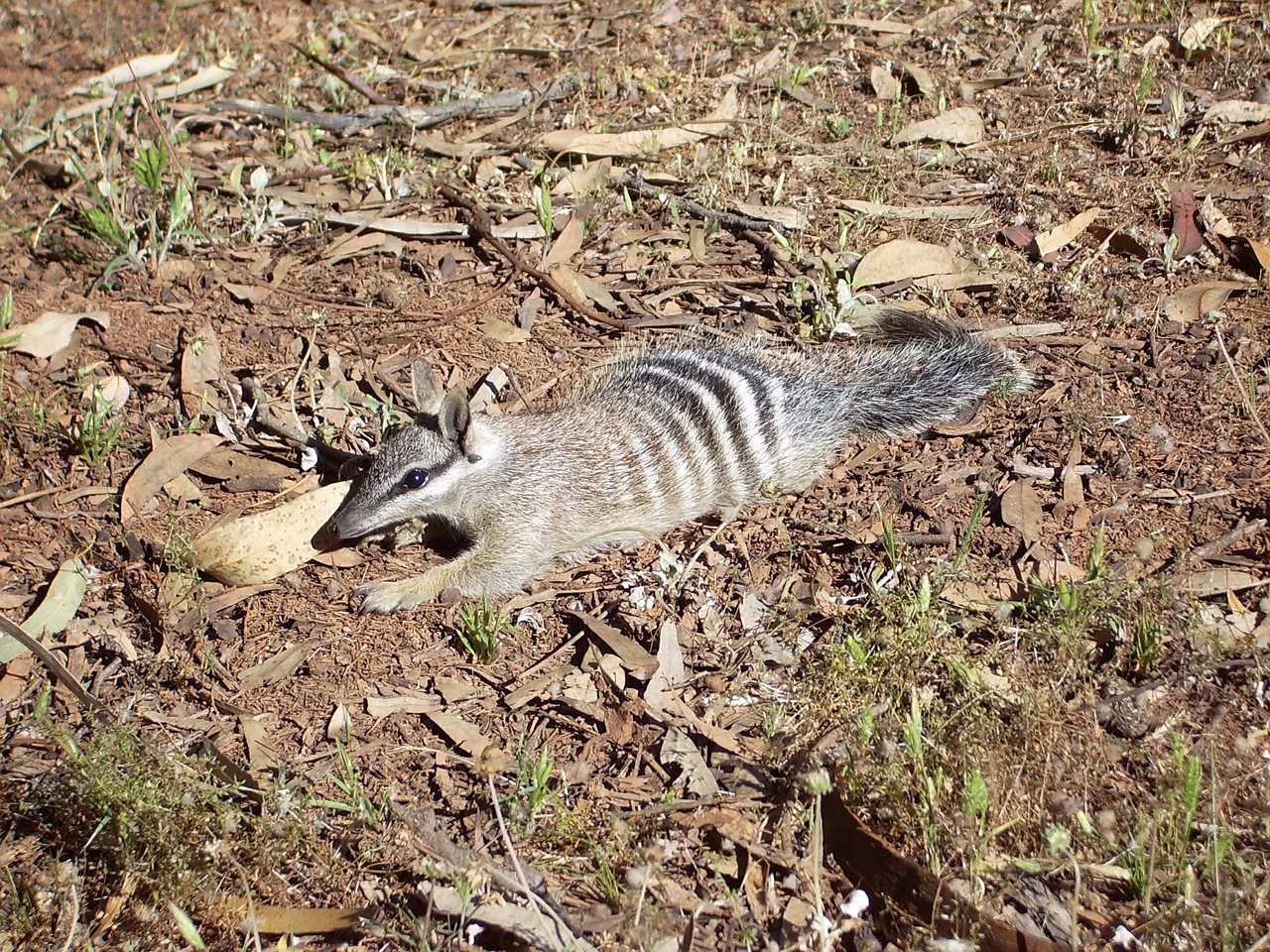Scientific classification: The numbat is the only member of the Myrmecobiidae family in the order Marsupialia. It is classified as Myrmaecobius fasciatus.
Introduction
The Numbat or Banded Anteater is a squirrel-sized marsupial with a long, sticky tongue, which it uses to lick up ants and termites. numbat facts, Unlike most marsupials, numbats are diurnal that is, they are active during the day rather than at night and females do not have abdominal pouches.
Habitat
Numbats once inhabited large portions of the Australian continent, but today are confined to southwestern Australia. Their preferred habitat is eucalyptus forests, where termites often thrive. One variety, numbat facts or subspecies, lives in deserts.
Description of Numbats
Numbats have long, gray-brown fur with distinct brown and white stripes on the lower half of the body. A dark stripe passes along each side of the head from the long, pointed snout to the ear. Numbats average 24 cm (9 in) in length, not including the bushy tail, which measures about 17 cm (about 7 in). Numbats weigh 300 to 500 g (0.6 to 1 lb); males are larger than females, numbat facts. Numbats have large eyes, small teeth, and their tongues measure about 12 cm (about 4.5 in) in length.
Feeding
Numbats are insectivores, primarily feeding on termites and ants. Because they need to eat roughly 15,000 termites a day, numbats spend much of their time in search of food, probing just beneath the surface of the ground, in rotten logs, and in dead trees. They sniff the ground, numbat facts using their long snouts to turn over leaves, branches, and small stones in the process. On locating a termite burrow, the numbat digs it open and rapidly licks up termites and any ants that may also be present.
Reproduction
Numbats are solitary animals, except during the breeding season, which occurs between January and April. Females make nests of leaves and grass in hollow logs or burrows. They typically give birth to four young per litter. Like all marsupials, numbats are born immature and spend the early part of their lives clutching the fur on their mother’s belly, attached to one of her four nipples. Because the female numbat does not have an abdominal pouch, numbat facts, she drags her young beneath her as she moves about. When they are old enough to survive for short periods on their own usually at about four months they remain in the nest, where the mother feeds them. Numbats are believed to reach sexual maturity after about one year.
Conservation
Numbats are an endangered species. They are threatened by habitat destruction, particularly brush fires because they kill termites the numbat’s primary food supply. Predation, especially by foxes and dingoes, also threatens numbat survival. Captive breeding colonies have been established to help restore the size of wild populations.

